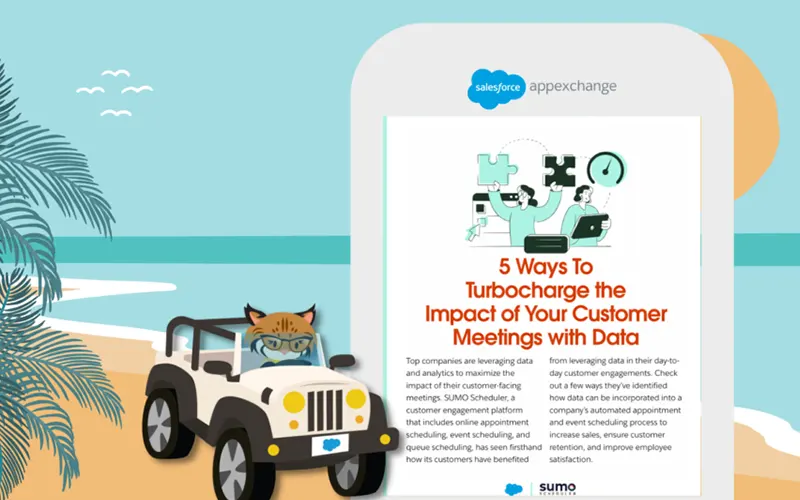Top companies are leveraging data and analytics to maximize the impact of their customer-facing meetings. SUMO Scheduler, a customer engagement platform that includes online appointment scheduling, event scheduling, and queue scheduling, has seen firsthand how its customers have benefited from leveraging data in their day-today customer engagements. Check out a few ways they’ve identified how data can be incorporated into a company’s automated appointment and event scheduling process to increase sales, ensure customer retention, and improve employee satisfaction.
1. Know Thy Customer
Gathering key customer demographics during the appointment scheduling process provides your sales and service teams with critical information that can help them plan more impactful meetings. Salesforce native applications, such as SUMO Scheduler, can push information from your custom scheduling flow to the Salesforce record for easy reference and reporting.
2. Educated Buyers Are Active Buyers
Knowledge is power, especially in the sales process. Companies are leveraging file upload/download capabilities within their appointment scheduling processes to provide prospective clients with the information that they need to make informed product decisions or to apply for services. By doing so, they are removing decision-making barriers and speeding up the sales process.
PRO TIP
Implement a Salesforce native appointment and event scheduling application that offers file-sharing capabilities. Not only will you see the direct benefits of an educated customer but you can store files directly within your org for easy access.
3. Meet Your Customers Where They Live
Today’s customer expects companies to provide them with multiple methods for scheduling a meeting with a live person. From online chatbots to website scheduling portals to social media listings, tech-savvy buyers want to engage with your team on their terms.
4. Optimize Your Sales/Customer Engagement Process
Leverage Salesforce Analytics and reporting tools to drive improvements in your sales customer retention processes. By analyzing appointment data trends such as the number of meetings, status, and outcome and pairing them with key sales metrics such as stage duration and conversion rate, sales managers can pinpoint opportunities for improvement and drive meaningful change in their organizations.
PRO TIP
The changes that result from this data can lead to a significant boost in productivity, employee/customer satisfaction, and profit. Make sure that your scheduling application leverages Salesforce object reporting to maximize your reporting capabilities.
5. Maximize Your Most Valuable Resources
A company’s most valuable resource is its people. Nothing is more frustrating to a sales or customer service manager than underutilized talent. By combining Salesforce analytics, dashboards, and appointment scheduling software, managers can have a real-time view of staff appointment availability and utilization so that they can make informed decisions regarding staffing and role assignments. This optimization, in combination with empowering customers to schedule directly on staff calendars, ensures that sales and customer service representatives spend more time in front of clients.
PRO TIP
In order to maximize staff utilization, a scheduling application should utilize advanced appointment assignment logic that offers employee availability such as skill, role, availability, territory, and location.
Original text: SalesForce AppExchange





